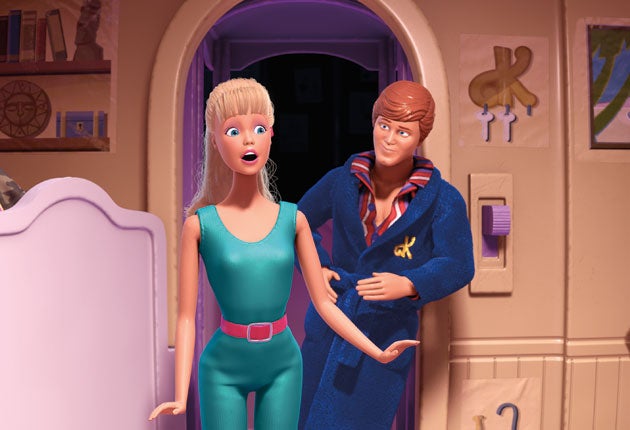The curse of Barbie is alive and well in children's cinema
Continued use of distorted female stereotypes as 'eye candy' blamed on male-dominated industry

Your support helps us to tell the story
From reproductive rights to climate change to Big Tech, The Independent is on the ground when the story is developing. Whether it's investigating the financials of Elon Musk's pro-Trump PAC or producing our latest documentary, 'The A Word', which shines a light on the American women fighting for reproductive rights, we know how important it is to parse out the facts from the messaging.
At such a critical moment in US history, we need reporters on the ground. Your donation allows us to keep sending journalists to speak to both sides of the story.
The Independent is trusted by Americans across the entire political spectrum. And unlike many other quality news outlets, we choose not to lock Americans out of our reporting and analysis with paywalls. We believe quality journalism should be available to everyone, paid for by those who can afford it.
Your support makes all the difference.Blockbuster movies are perpetuating negative female stereotypes, according to a new study that shows women barely get a look-in on the world depicted in children's cinema.
Men, or male characters, dominated the 122 biggest-grossing family films released in the three years to September 2009, American researchers found, prompting campaigners to warn that children are getting a lopsided view of life at an impressionable age.
In the male-centric universe of the silver screen, a woman's role is as "eye candy", where her looks, age or what she is wearing matters more than what she does, the report found. Geena Davis, the actress who campaigns for gender equality, said she was shocked by the findings. "Zero progress has been made in what is specifically aimed at kids," she said. "What children see affects their attitudes towards male and female roles in society. And, as they watched the same shows and movies repeatedly, negative stereotypes are imprinted over and over again."
From the young, blonde and beautiful Alice, in the 1933 animation of Lewis Carroll's Alice in Wonderland, to the slim and busty Princess Fiona in Shrek the Third, wasp-waisted female characters have long landed all the big parts in Hollywood. Even the summer hit Toy Story 3 was branded "carelessly sexist" for its negative depictions of women in the film and prevalence of male roles: for every seven male characters, there was just one female.
Aric Sigman, an associate fellow of the British Psychological Society, called the age gap between male and female actors "the biggest inequity" on the cinema screen. "Girls learn through omission that only the young count; physical youth is all in terms of female worth and therefore self-worth," he added. When it came to female roles, the psychologist said he was "less concerned about quantity than quality. The numbers are less important than how the women are portrayed."
Davis, best known for playing Thelma in the feminist road-trip film Thelma and Louise, added: "Eye candy is not for kids." Three years ago she set up an institute to push the film industry to take women more seriously. Madeline Di Nonno, executive director of the Geena Davis Institute on Gender in Media, said: "Media has gotten a bit better about how race is portrayed in film and TV, but the needle hasn't moved at all for the biggest section of our population, females. Gender issues need to be top of mind for children's content creators."
The study, which looked at films from Ice Age 3 to Mamma Mia, X-Men Origins: Wolverine and Kung Fu Panda, found that of the 5,554 speaking roles in the 122 movies, 71 per cent of the characters were men or had men's voices and 29 per cent were women. Of the female characters, a quarter wore sexy clothes, while one in five were partly nude. One in five were also under 21, nearly double the number of male characters of that age, while hardly any of the women on screen were over 40. The researchers – Stacy Smith and Marc Choueiti at the University of Southern California's Annenberg School for Communications and Journalism – noted that the wasp-waisted women had "little room for a womb or for any other internal organ".
Professor Smith said the fact that the overwhelming majority of content creators are men was to blame: 93 per of directors, 87 per cent of writers and 80 per cent of producers. The news last week that Pixar, the studio behind Cars, Finding Nemo and the Toy Story trilogy, had lost its sole female director, Brenda Chapman, will intensify fears that the next three years of Hollywood output will be just as skewed against women.
Join our commenting forum
Join thought-provoking conversations, follow other Independent readers and see their replies
Comments